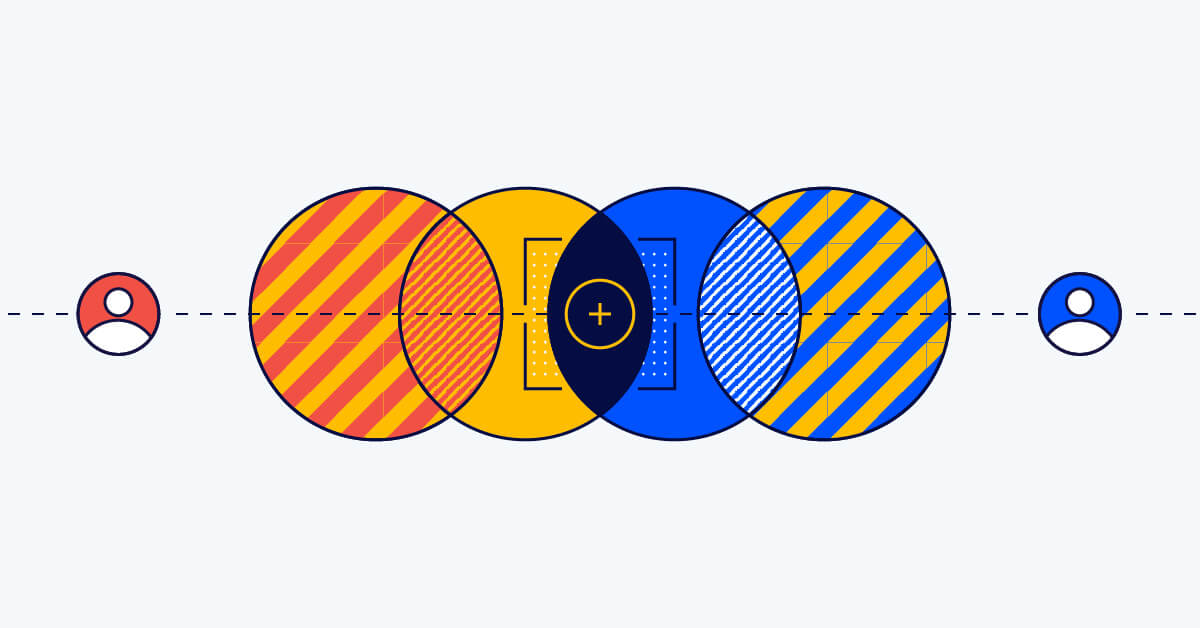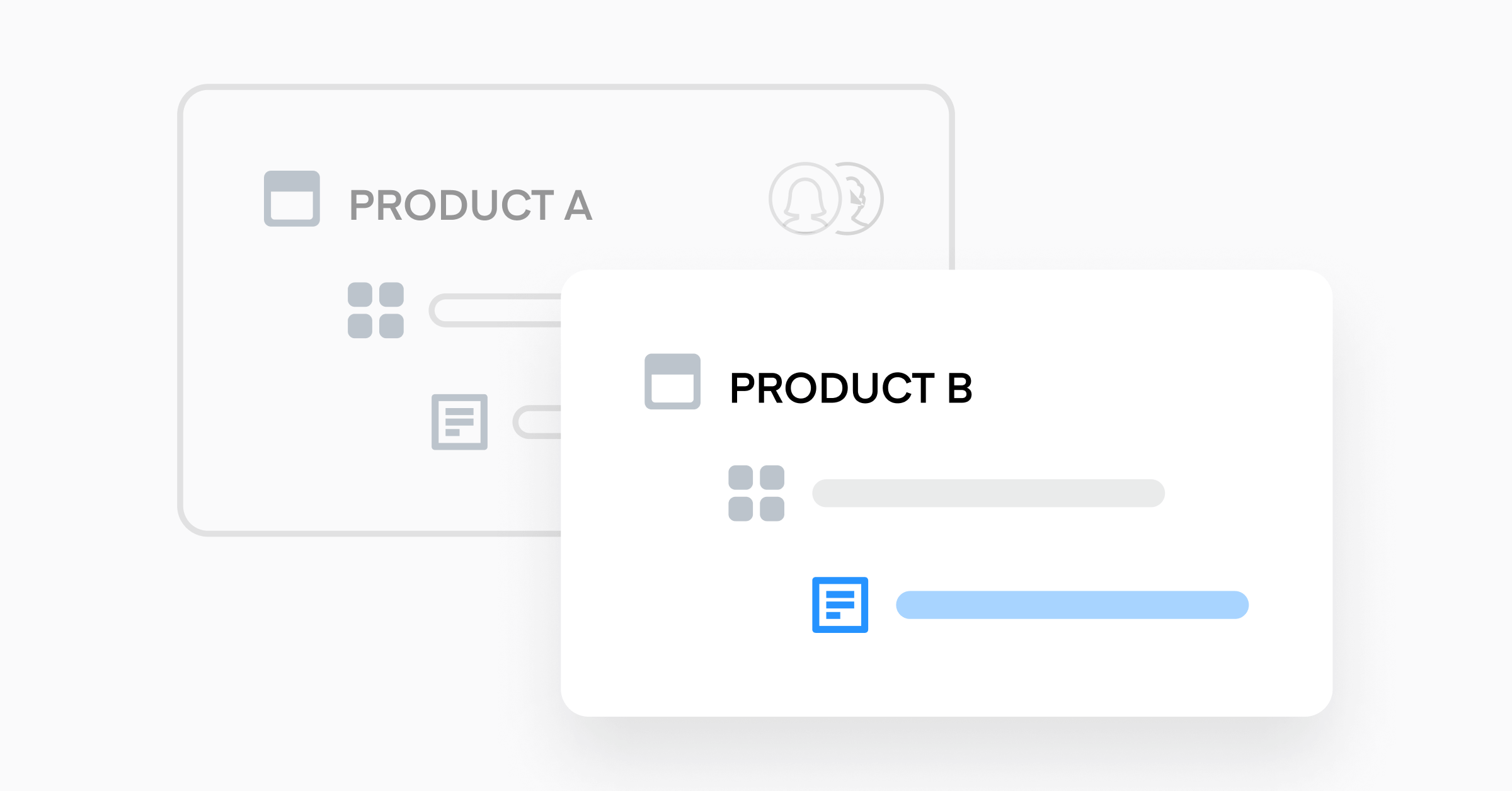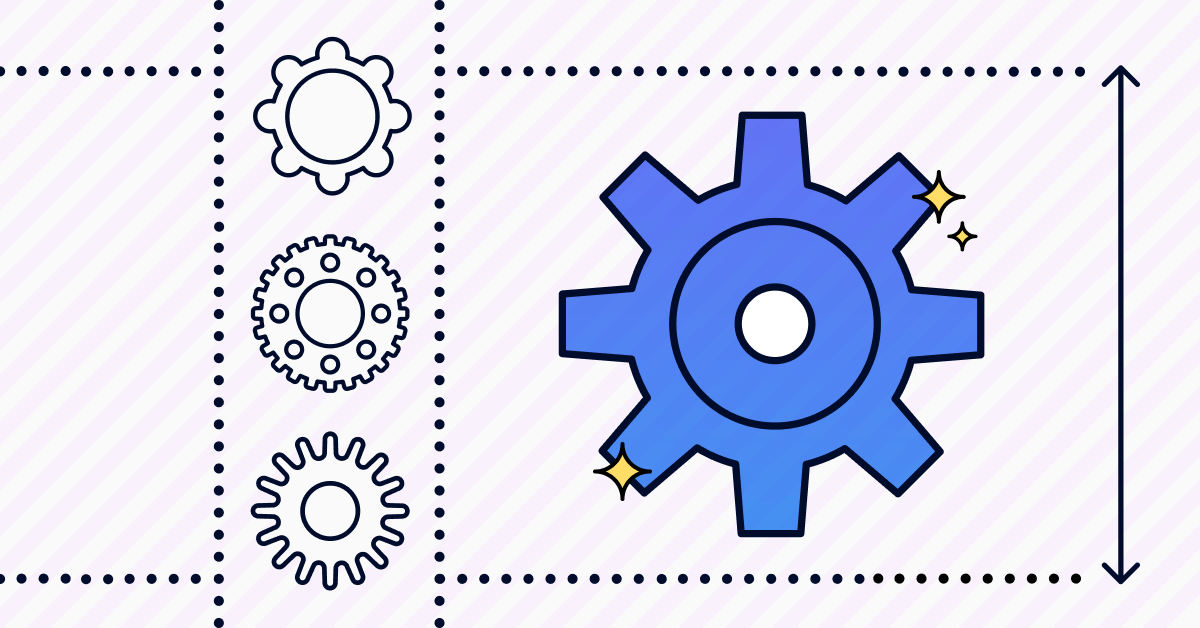Project Roadmap vs. Product Roadmap

Product managers understand the critical role that roadmaps play in successful product development and project execution, serving as living documents that guide all owners and stakeholders through a project’s lifecycle. But not all roadmaps are created equal.
Project roadmaps are short-term, detailed plans that guide the execution of a specific project, while product roadmaps are long-term, high-level strategic plans that outline the evolution and development of a product over time.
Both serve critical roles in helping organizations achieve their objectives, aligning stakeholders, and managing their resources effectively.
What is a Project Roadmap?
A project roadmap is a visual, strategic planning tool that outlines the various tasks, activities, milestones, and timelines required to complete a specific project successfully. It provides a high-level overview of the project’s objectives, key deliverables, and the planned sequence of activities necessary to achieve those objectives within a defined timeframe. The purpose of a project roadmap is to:
- Communicate the project’s overall plan and progress with stakeholders, team members, and other relevant parties.
- Plan and organize the project by breaking it down into manageable phases and tasks.
- Align different teams and stakeholders involved in the project to ensure they are all working towards the same goals.
Set and manage clear expectations about what will be delivered, when it will be delivered, and how the project will progress.
Components of a Project Roadmap
For a project roadmap to serve as a valuable planning and communication tool, it should outline a clear and structured overview of project execution that helps teams and stakeholders stay focused, organized, and on schedule. Key components of a project roadmap typically include:
- Clearly defined project goals that define what the project aims to achieve
- A timeline or a Gantt chart with phases, milestones, and estimated timeframes attached to each task
- An outline of specific tasks and activities required to complete the project
- Any dependencies between tasks, showing what needs to be completed and in what order
- Resource allocation, including team members, budget, and equipment needed for the project
- Risk analysis to identify potential vulnerabilities and create plans to mitigate them
- Mechanisms to track progress and update stakeholders on the project’s status.
A project roadmap is a dynamic document that should be adjusted and updated as the project progresses, new information becomes available, or priorities shift. Regular reviews and updates are necessary to ensure that the project stays on track and adapts to any changing circumstances.
Project Roadmap Uses
Project roadmaps have several important uses that make them valuable tools for managing and executing projects effectively. Here are some of their key uses:
Clear and visual communication of a project’s overall plan and progress with team members and stakeholders, ensuring that everyone involved understands its objectives, timeline, and milestones.
Planning, organization, and resource allocation using a structured overview of the project’s scope, breaking it down into manageable phases, tasks, and activities.
Alignment between different teams and stakeholders, fostering collaboration and ensuring they are all working towards the same goals.
Setting clear start and end dates for each phase and milestone, allowing for effective time and resource management.
As a foundation for informed decision-making and prioritization, the roadmap provides transparency into progress and direction, helping manage expectations and serve as a valuable documentation tool.
Project Roadmap Examples
Here are a few examples of project roadmap templates for different types of projects. These examples are simplified and can be adapted and customized based on the specific needs and complexity of your business and the project at hand.
Example 1: Software Development Project Roadmap
| Quarter | Objective | Key deliverables | Milestones |
| Q1 | – Requirements gathering
– Design + planning |
– User stories, use cases defined
– Wireframes, UI/UX designs |
– Requirements and sign-off
– Design approval |
| Q2 | – Development
– Testing + QA |
– Code development, testing
– Bug fixes, performance testing |
– Beta release
– Final release |
| Q3 | – Deployment + launch
– Post-launch monitoring |
– Deployment to production servers
– User feedback analysis |
– Performance analysis |
Example 2: Marketing Campaign Project Roadmap
| Phase/week | Objective | Key activities | Milestones |
| Week 1 | – Campaign planning | – Define target audience
– Create campaign concept |
– Audience segmentation
– Campaign concept approval |
| Week 2-3 | – Content Creation | – Develop marketing materials
– Design visuals and graphics |
– Complete content creation
– Visuals approval |
| Week 4-5 | – Execution + launch | – Implement campaign
– Monitor performance |
– Campaign launch
– Initial performance analysis |
| Week 6 | – Evaluation + reporting | – Analyze campaign results
– Identify lessons learned |
– Campaign report
– Project closure |
Example 3: Construction Project Roadmap
| Phase/month | Objective | Key tasks | Milestones |
| Month 1 | Pre-construction | – Site assessment and permits
– Design finalization |
– Permits approval
– Design sign-off |
| Month 2-3 | Foundation + framing | – Excavation and foundation laying
– Framing and structural work |
– Foundation completion
– Framing completion |
| Month 4-5 | Plumbing + electrical | – Plumbing installations
– Electrical wiring and fixtures |
– Plumbing completion
– Electrical completion |
| Month 6-7 | Interior + exterior | – Interior finishing
– Exterior finishing |
– Interior completion
– Exterior completion |
| Month 8 | Final touches + handover | – Painting and touch-ups
– Project handover to owner |
– Final inspection
– Project handover |
These are just a few examples, and project roadmaps can be tailored to various industries, project types, and specific goals. The format and level of detail can be adjusted based on the project’s complexity and the information needed for effective planning and communication.
What is a Product Roadmap?
Unlike the more short-term, task-focused project roadmap, product roadmaps are strategic planning tools used by product managers and development teams to outline the vision, direction, and future development of a product over a specific period.
They provide a high-level overview of the product’s evolution and the planned features, enhancements, and improvements that will be implemented to meet the needs of customers, align with business goals, and stay competitive in the market.
Components of a Product Roadmap
The primary purpose of a product roadmap is to communicate the product strategy to stakeholders, including executives, marketing teams, development teams, and other relevant parties. It serves as a guiding document that aligns the efforts of different teams toward achieving the common goal of enhancing the product.
Key components in the product roadmap process include:
- Timelines spanning several quarters or years, depending on a product’s lifecycle and the company’s strategic plans.
- Themes and objectives representing the key focus areas for development efforts.
- Features and enhancements, improvements, and updates, often categorized by priority or release phase.
- Milestones and events that mark key achievements or the completion of specific development stages.
- Dependencies and constraints between different features or projects, including deadlines, resource availability, and external factors that may impact execution and product outcomes.
- Data collection and competitive analysis on market trends, customer feedback, and the competitive landscape to inform decision-making.
- Risk analysis to surface anything that could impact the product’s success.
- Clear and measurable key performance indicators (KPIs) or success metrics that define how the product’s performance and impact will be evaluated.
- Communication, feedback, and iteration plans for how the roadmap will be shared, frequency of updates, communication channels, and process for gathering and incorporating feedback from users and stakeholders.
- Details about planned release cycles, feature rollout, and any beta testing phases.
- The product’s long-term vision and how it aligns with the company’s overall strategy.
It’s essential to note that a product roadmap is not a detailed project plan but rather a strategic overview. As the product evolves and more information becomes available, a good roadmap may be adjusted, refined, and updated to reflect changing priorities and market conditions.
The product roadmap acts as a living document that facilitates communication, aligns stakeholders, and guides decision-making throughout the product development process. It is a vital tool for maintaining a product’s competitiveness, responding to market needs, and achieving long-term business objectives.
Product Roadmap Uses
The primary purpose of a product roadmap is to communicate the product strategy to stakeholders, including executives, marketing teams, development teams, and other relevant parties. It serves as a guiding document that aligns the efforts of different teams toward achieving the common goal of continually bringing quality products to market.
Product roadmaps:
- Facilitate communication, align stakeholders, and guide decision-making throughout the product development process
- Serve as a living document, adapting to changing priorities and market conditions
- Detail the product development timeline, themes and objectives, features, milestones, dependencies, and constraints
- Help maintain a product’s competitiveness while supporting long-term business objectives, and giving teams a central place to address market need
- Aid in prioritization, resource allocation, stakeholder management, risk management, and market positioning
- Support collaboration, align sales and marketing efforts, and provide a long-term product vision for the organization.
It’s essential to note that a product roadmap is not a detailed project plan but rather a strategic overview. As the product evolves and more information becomes available, the roadmap may be refined to reflect changing priorities and market conditions.
Product Roadmap Examples
Below are two simplified examples of product roadmap contents. They can be customized based on the specific product, industry, market share, and company goals, in addition to other unique business considerations, and there are many types of roadmaps that visualize these milestones in different ways.
Example 1: Contents of a Software Product Roadmap
| Quarter | Objective | Key Initiatives | Planned Milestones | Key Metrics |
| Q1 | Improve user onboarding | UX/UI redesign | – Streamlined signup process
– Enhanced onboarding flow – Mobile app onboarding |
– User activation rate
– User retention rate – Mobile app adoption |
| Q2 | Feature enhancements | Integration with 3rd-party API | – API integration
– Improved data export functionality – Enhanced reporting options |
– API usage metrics
– Export usage metrics – Reporting adoption |
| Q3 | Performance optimization | Database optimization | – Faster loading times
– Reduce server response time – Improved app stability |
– Page load speed
– Server response time – Crash rate |
| Q4 | Mobile app development | iOS app development | – iOS app release
– App store optimization – Android app development |
– App downloads
– App store ranking – Android app release |
Example 2: Contents of a Consumer Electronics Product Roadmap
| Year | Objective | Key Initiatives | Planned Features | Key Performance Indicators |
| 2023 | Product refresh + enhancements | Product redesign | – Planned features
sleeker design with premium materials – Enhanced user interface and controls – Improved durability and water resistance – Longer battery life |
– Customer satisfaction rating
– Product return rate – Product warranty claims – Battery life improvement |
| 2024 | Next-gen technology integrations | 5G connectivity | – Integrated 5g modem
– Enhanced IoT connectivity – AI voice assistant integration |
– 5g network performance
– IoT device compatibility – User interaction metrics |
| 2025 | Sustainability + eco-friendly focus | Sustainable materials usage | – Percentage of recycled materials in product
– Reduced packaging waste – Energy efficiency improvements |
– Environmental impact rating
– Packaging eco-footprint – Energy star rating |
These examples demonstrate how a product roadmap can be structured to showcase the product’s strategic direction, key objectives, planned initiatives, and specific features or enhancements.
How are Project Roadmaps and Product Roadmaps different?
Project roadmaps and product roadmaps are different in several ways:
Focus
- Project roadmaps focus on the execution and completion of a specific project. The roadmap outlines the tasks, activities, and milestones required to achieve the project’s objectives within a defined timeframe.
- Product roadmaps cover the strategic direction and development of a product over time; the roadmap outlines planned features, enhancements, and improvements to the product to meet market demands and business goals.
Timeframe
- Project roadmaps have a shorter timeframe, covering the duration of the project, which may last from a few weeks to several months.
- Product roadmaps have a longer timeframe, often spanning multiple quarters or even years, as they outline the product’s development and evolution over time.
Scope
- Project roadmaps are limited to the specific project it is designed for, and includes all the tasks and resources needed to complete that particular project.
- Product roadmaps provide a broader view of the product’s overall strategy and how it aligns with the company’s vision and customer needs.
Depth of detail
- Project roadmaps are more detailed and granular, breaking down tasks, deadlines, and resource allocations for each stage of a project.
- Product roadmaps are less detailed and more high-level. They focus on major features, milestones, and objectives without going into the minutiae of day-to-day tasks.
Audience
- The primary audience for a project roadmap includes the project team members, stakeholders, and anyone involved in the project’s execution.
- A product roadmap’s audience consists of product managers, executives, stakeholders, and teams responsible for product development, marketing, and sales.
Purpose
- Project roadmaps guide the successful execution and completion of a specific project within the allocated resources and timeline.
- Product roadmaps provide a strategic vision for the product’s growth and development, ensuring that it stays relevant, competitive, and aligned with the company’s goals.
Productboard’s Product Roadmap Solutions
Productboard offers a robust set of product roadmap solutions designed to empower product managers in both planning and execution. Its visually engaging interface lets users effortlessly create and customize roadmaps, organizing features and initiatives by priority, timeframes, and themes.
Productboard’s idea prioritization tools enable product managers to gather ideas from diverse sources and make informed decisions based on customer impact and strategic alignment. Improved collaboration among teams and stakeholders enhances decision-making processes, and integration with popular tools like Jira, Trello, and Slack streamlines workflows and data synchronization.
Roadmap analytics and reporting features allow for data-driven insights; versioning and persona-based roadmaps facilitate scenario planning, and ensure alignment with specific user needs. Using a comprehensive and collaborative approach to effective product roadmap planning and execution, Productboard helps businesses deliver products that continually meet customer needs and evolving business goals.
Users can:
- Drag and drop features, initiatives, and ideas onto the roadmap, organizing them based on priority, timeframes, and themes.
- Tailor the roadmap views to suit their audience. Different views, such as timeline view or list view, allow for better communication with stakeholders, executives, and development teams.
- Gather ideas from various sources, such as customer feedback, team members, and market research, enabling prioritization based on customer impact, strategic alignment, and the effort required for implementation.
- Define dependencies between features or initiatives on the roadmap, in order to understand the implications of delaying or advancing specific items.
- Measure the progress of initiatives, assess the impact of releases, and gain insights to make data-driven decisions.
- Create multiple roadmap versions or “what-if” scenarios to explore different product strategies.
- Develop persona-based or customer segment-specific roadmaps, ensuring that the product’s direction aligns with the needs of different user groups.
Leading businesses rely on Productboard to create product and project roadmaps that simplify and synchronize important information, streamlining the path towards success and adoption. Easily execute against product management KPIs, improve business outcomes, and contribute to overall growth with deeper transparency into the impact of every data-driven decision. Start a free trial today.




